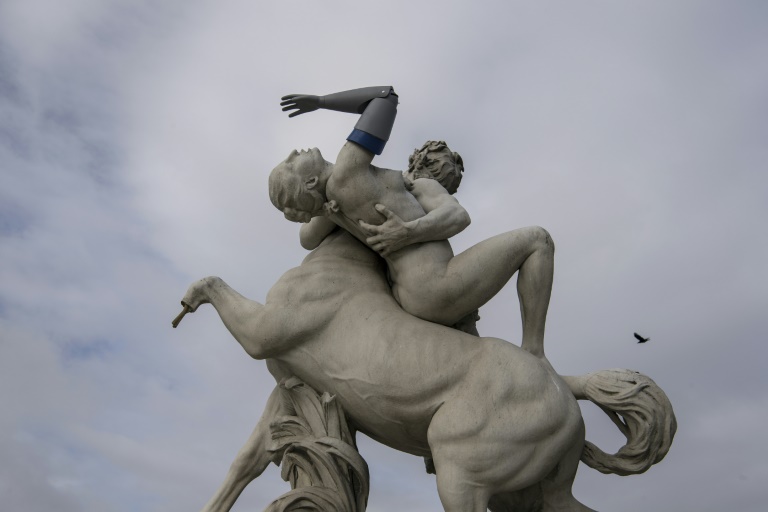Disciplinary process for Duduzile Zuma-Sambudla in motion as two MK party members appeal expulsion
The operation at the Louvre metro station, just outside the museum in the French capital where the original Venus stands, urges an increased use of quickly made, but often more costly, 3D prosthetics instead of traditional devices.
The replica has the goddess holding a moulded apple in her left hand.
Other statues across Paris were also being fitted out with prosthetics, including several in the nearby Tuileries Garden such as the “Alexandre Combattant” (Alexander Fighting) by Charles Leboeuf.
It was part of the charity’s #BodyCantWait campaign, which has already given 19 people resin-based “printed” limbs in Togo, Syria and Madagascar, and will soon provide them to more than 100 people in India.
Handicap International says roughly 100 million people around the world need artificial limbs.

A symbolic prosthetic arm was attached to a sculpture by Laurent-Honore Marqueste in the Tuileries Gardens in Paris on Tuesday
“We want to take this to the next level, bringing them to more countries and equipping more people,” Xavier de Crest, head of Handicap International France, told AFP.
He defended the charity’s push for devices made with 3D printers despite their higher price tag, saying they were easier to produce, in particular in developing countries.
“Before 3D printing, you had to make a plaster cast of the stump, adjust it four or five times, encase it in resin, things that required trained professionals and lots of equipment,” de Crest said.
“Now a tiny scanner can analyse the stump and transfer the measurements to modelling software, then to a 3D printer. You save time and it’s more practical, especially when we’re working in a conflict zone like Syria,” he said.
Download our app